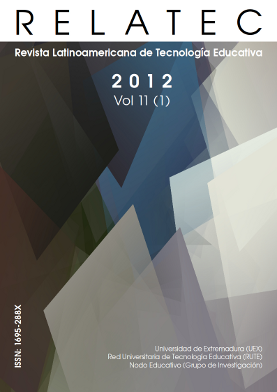La enseñanza y el aprendizaje de la física y el trabajo colaborativo con el uso de las TIC
Keywords:
aprendizaje, física, aprendizaje de la ciencia, MOSEM2, simulaciónAbstract
Para promover en profesores de física, técnicas que promuevan el aprendizaje activo de la física en sus alumnos, se ha desarrollado un seminario utilizando vídeos, animaciones y experimentos. Esta experiencia se enmarca en el Proyecto Europeo MOSEM. Participaron veintiún profesores de física de la Región de Murcia. Se analiza el desarrollo del seminario para determinar el efecto que produjo en la formación de los docentes respecto a dos grandes bloques: competencias y uso de tecnologías de la información y comunicación (TIC) y expectativas y grado de satisfacción respecto al seminario. Los resultados indican que con una adecuada formación, el docente haciendo uso de TIC (específicamente, simulaciones de física), podría mejorar el proceso de enseñanza y aprendizaje de la física en secundaria.
To promote physics teachers techniques that promote active learning in students of physics, has developed a seminar using videos, animations and experiments. This experience is part of the European Project MOSEM. Twenty-one physics teacher participated in the Region of Murcia. We analyze the seminar to determine the effect produced in the formation of teachers on two main groups: skills and use of information technology and communication (ICT) and expectations and degree of satisfaction with the seminar. The results indicate that with proper training, teachers using ICT (specifically, physical simulations) could improve the teaching and learning of physics in high school.
Downloads
Downloads
Published
Issue
Section
License
Authors who publish in this journal accept the following conditions:
1. The Author retains copyright in the article. Upon acceptance of the article, the author shall grant to the Publisher the right of first publication of the article. with the dcoument registered with the Creative Commons Attribution-NonCommercial-NoDerivative 4.0 International (CC BY-NC-ND) license, which allows to third parties to use what is published whenever they mention the authorship of the work and the first publication in this journal.
2. Authors can make other independent and additional contractual agreements for the non-exclusive distribution of the article published in this journal (eg, include it in an institutional repository or publish it in a book) provided they clearly indicate that the work was published for the first time in this journal.
3. Authors are allowed and recommended to publish their work on the Internet (for example on institutional or personal pages) before and during the review and publication process, as it can lead to productive exchanges and a greater and faster diffusion of published work (see The Effect of Open Access).









